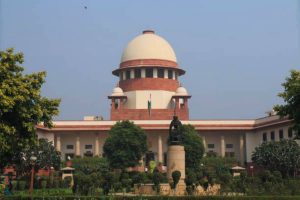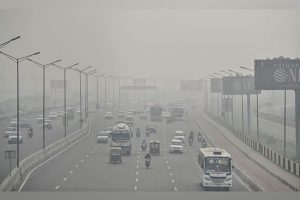The new constitution of Nepal was adopted by the second Constituent Assembly on 20 September 2015. Despite the frequent changes of government, the country is moving on implementing the new constitution – of course not accepted by many including Madhesis and Janjatis – step by step through successful elections to local level units and now through the federal Parliamentary and Provincial Assembly elections. The first phase of election was held on November 26 for 37 parliamentary seats and 74 assembly seats in 32 districts under the First-Past-the-Post electoral system and the second phase election held today (7 December) will cover 128 parliamentary and 256 assembly seats in 45 districts while 110 representatives will also be elected under the Proportional Representation system simultaneously.
Unlike previous elections including the two Constituent Assembly elections, the present one is unique as there are only two major alliances that dominate the electoral scenario. The first is the communist alliance which has been constituted mainly by the Communist Party of Nepal-UML (UML), which was the main opposition in Parliament before it was dissolved in October last after the process of filling nominations began, and the Maoist Centre, which is presently a partner of the coalition government. Some fringe communist parties too have joined the alliance. This alliance is fighting the election on the plank of nationality, sovereignty, independence, self-respect, stability and prosperity. It supports the present constitution as it is. Its slogans have an anti-Indian intonation.
The second is the democratic alliance led by the Nepali Congress (NC), which heads the government. Parties under this alliance are two Rashtriya Prajatantra parties supporting constitutional monarchy and are against secularism. The plank of this alliance is to save the present democratic achievements and make the constitution acceptable to others by amending it to meet the interests of those sections whose aspirations have not been addressed by it. It advocates that the authoritarian regime of the communists will obstruct the all-round development of individuals and the country.
Interestingly, the left alliance was announced on 3 October 2017, strategically almost after completion of the third phase of local level elections in September last and the announcement of the dates for federal and provincial assemblies by the government. The Naya Shakti Party-Nepal (NSPN) led by Dr. Baburam Bhattarai, ex PM and one of the founders of the Communist Party of Nepal-Maoist, which had joined the alliance initially, severed its relations within ten days of its formation to contest election on its own symbol. Curiously, the Maoist Centre is still continuing in the government despite the fact that its ministers have been deprived of their portfolios.
No sooner the left alliance was formed the government led by the NC came under the pressure of losing the majority in the House once the MC left the government and the subsequent refusal of support by the Madhes-centric parties. Since the House was dissolved as per provisions of the constitution on 15 October, the NC was desperate to form a broad democratic alliance. There are two pertinent questions being raised in political circles in the present context. One, how did PK Dahal ’Prachanda’ and KP Sharma ‘Oli’ came to terms to form an alliance when they were at daggers drawn with regard to power sharing previously? Second, will either of these coalitions be able to sweep the election with a two-thirds or even a comfortable majority so that some stability is assured?
Seemingly, frenzied consultations were made under pressure to meet some internal and external designs. Prachanda of the Maoist Centre on 7 October agreed to forge an alliance with the UML in haste due to “extreme pressure and compulsion” without any further clarification during the politburo meeting and political training of the party. To some, forming a single party after the election was really a distant goal, but contesting the elections was just a step towards replacing the Sher Bahadur Deuba government before the elections. However, the left alliance parties had their own goalposts. The MC, which could not fare well in the previous elections, decided to join the alliance for getting benefit from the elections and secured Prachanda’s victory to ensure his crucial role in the future. Some reasons for the UML’s initiative to form an alliance are obvious. First, it will head the alliance. Secondly, the ego of its chairman, Mr Oli, is satisfied with Prachanda’s coming to work with him. Thirdly, it will receive MC’s support in local level units. And lastly, it helps secure majority in the elections.
Significantly, China appears to have been steering the whole exercise as a common commander since it was not satisfied with the dismantling of the pro-China UML and MC coalition government a year ago, and anti-China stance of the present government. It planned the change of guard, which collapsed due to some internal constraints of the parties, and limited time to execute it due to the elections.
Though, the effect of the alliance will be finally known from the election results, the results of local level units can indicate some trends. Since there was a difference of hardly ten thousand popular votes between the UML and the NC, the 1.6 million votes received by the MC may be significant in influencing the final result. Other factors that may influence the outcome are the number of invalid votes – which are traditionally high – and whether the pattern of local and provincial elections are replicated.
(The writer, a former Election Commissioner of Nepal, is associated with the Nepal Transition to Peace Institute)












